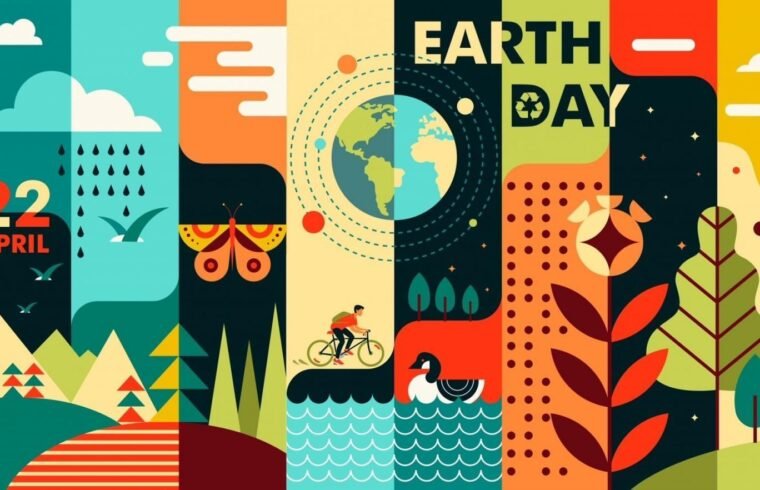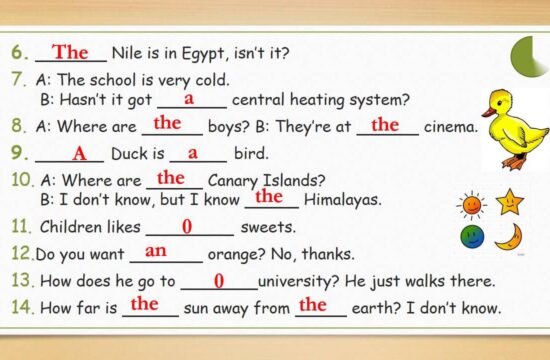Earth Day is celebrated every year on April 22 to raise awareness about the environment and the importance of preserving our planet. This day encourages individuals, communities, and organizations to engage in activities that help protect nature and reduce human impact on the Earth. For educators, it is an opportunity to teach students about environmental responsibility in a fun and interactive way. One of the most effective tools to educate students about Earth Day is by using Earth Day worksheets. These worksheets not only provide valuable information but also help students engage in activities that make learning enjoyable and memorable. In this article, we will discuss how to create an engaging Earth Day worksheet for students, focusing on key elements to include and tips for tailoring the worksheet to different age groups.
What is an Earth Day Worksheet?
An Earth Day worksheet is an educational tool designed to teach children about the significance of Earth Day and the importance of taking care of the planet. These worksheets typically include a variety of activities, such as trivia, coloring exercises, puzzles, and questions that aim to spark curiosity and environmental awareness. The goal is to make learning about environmental issues both fun and educational, ensuring that students grasp important concepts like recycling, sustainability, and conservation.
By using an Earth Day worksheet, students are encouraged to reflect on their personal actions and how they can contribute to a healthier planet. Worksheets may also include discussions on the effects of pollution, the importance of protecting wildlife, and how simple actions like conserving water and reducing waste can make a difference. An Earth Day worksheet serves as a hands-on approach to educating students, allowing them to actively participate in the learning process while reinforcing the values of environmental stewardship.
Key Elements to Include in an Earth Day Worksheet
Creating an earth day worksheet requires careful consideration of what will engage and educate students effectively. The key elements to include are a mix of educational content, interactive tasks, and creative activities. First, it’s helpful to introduce fun facts about Earth Day. These could include information about its history, notable events, or statistics related to environmental protection. Fun facts make the subject more exciting and give students a deeper understanding of why Earth Day is so important.
Next, incorporate simple questions that stimulate critical thinking. These questions can be related to sustainability practices, such as “How can we reduce waste at school?” or “What are some ways to conserve water?” The goal is to make students think about the impact of their actions on the environment. In addition, including interactive activities like coloring pages, word searches, or matching exercises can make the worksheet enjoyable. For example, a matching task might ask students to match animals with their endangered habitats, while a coloring activity could involve drawing their vision of a clean, green planet.
Lastly, encourage action with tasks that promote sustainability. For example, a task could ask students to list three things they can do to reduce their carbon footprint or help the environment. These tasks not only educate but also motivate students to act on the knowledge they’ve gained, making the worksheet a tool for change.
How to Create an Earth Day Worksheet for Different Age Groups
Creating Earth Day worksheets tailored to different age groups ensures that the content is age-appropriate and engaging for all students. For younger students in elementary school, worksheets should be simple and interactive. These worksheets can include coloring pages with Earth Day themes, basic matching activities, and simple fact-based questions. For example, a worksheet might ask students to circle items that are recyclable or draw a picture of their favorite animal in its natural habitat. The language should be straightforward, and the activities should focus on fun and visual engagement.
For older students in middle school, Earth Day worksheets can be more challenging and thought-provoking. These worksheets can include more complex questions, like asking students to research ways to reduce pollution or to write about the environmental issues affecting their local community. Activities could include puzzles that focus on environmental concepts such as carbon footprints, recycling processes, and biodiversity. Middle school students can also be encouraged to work in groups to come up with a sustainability plan for their school or neighborhood. This level of engagement helps students apply what they’ve learned to real-world situations.
By adapting the complexity of tasks and activities, Earth Day worksheets can cater to different learning needs, ensuring that all students are both challenged and inspired.
Benefits of Using Earth Day Worksheets in the Classroom
Earth Day worksheets offer numerous benefits in the classroom. One of the primary advantages is that they help boost environmental awareness among students. By participating in various activities, students gain a better understanding of the environmental challenges facing our planet and learn about ways to reduce their ecological footprint. This awareness is crucial, as it shapes the attitudes and behaviors of future generations toward sustainability.
Another benefit is that Earth Day worksheets encourage creativity and critical thinking. Whether students are designing their own environmental solutions, answering thought-provoking questions, or creating posters to raise awareness, these activities require them to think deeply about the content. These creative exercises help students apply what they’ve learned in a practical and meaningful way.
Additionally, Earth Day worksheets often involve collaborative activities, which foster teamwork and cooperation. Students may work together on tasks like researching a specific environmental issue, designing a recycling program, or creating a class project focused on sustainability. These group activities promote communication skills and encourage students to share ideas, solutions, and knowledge with each other.
Printable Earth Day Worksheets: Where to Find Them
If you’re looking to provide students with ready-made Earth Day worksheets, there are numerous online resources where you can download high-quality, printable worksheets. Websites such as Education.com, Teachers Pay Teachers, and Pinterest offer a wide range of Earth Day-themed activities, including printable worksheets, coloring pages, and puzzles. These resources cater to various grade levels and are designed to be both educational and fun.
For those who prefer a more hands-on approach, you can also create your own Earth Day worksheets using tools like Google Docs or Canva. These platforms allow teachers to design custom worksheets that align with specific learning objectives. By incorporating a mix of facts, questions, and activities, you can create a worksheet that fits your students’ needs and enhances their understanding of Earth Day and environmental protection.
Whether you choose to download premade worksheets or create your own, printable Earth Day worksheets are an excellent way to make learning about the environment interactive and accessible.
How to Make Earth Day Worksheets Fun and Interactive
To ensure that Earth Day worksheets are engaging, it’s essential to include interactive elements that keep students motivated and excited about learning. One way to achieve this is by incorporating games, such as crossword puzzles, word searches, or bingo cards with Earth Day-themed words. These games not only make learning enjoyable but also reinforce key concepts related to sustainability, such as renewable energy, conservation, and recycling.
Another way to make worksheets fun is by using visuals like colorful images, charts, and infographics. Visual aids help students better understand complex concepts, especially when learning about environmental issues. For example, a worksheet might include a chart showing the differences between biodegradable and non-biodegradable materials, or a picture of an endangered species with a brief description of its habitat.
Additionally, consider including hands-on activities that students can complete outside the classroom. This could involve tasks like planting a tree, creating a recycling plan for the school, or organizing an Earth Day event. By connecting classroom learning to real-life actions, Earth Day worksheets become a powerful tool for promoting environmental responsibility.
Conclusion
In conclusion, Earth Day worksheets are an excellent way to teach students about environmental issues in a fun and engaging manner. By including a mix of educational content, interactive activities, and opportunities for action, these worksheets help students develop a deeper understanding of the importance of protecting the planet. Whether you’re designing your own worksheets or using printable resources, the key is to create activities that inspire curiosity, creativity, and critical thinking. Earth Day is not just about celebrating nature; it’s about encouraging students to take responsibility for the Earth and make sustainable choices in their daily lives. By using Earth Day worksheets, educators can play a pivotal role in shaping environmentally-conscious future generations.




